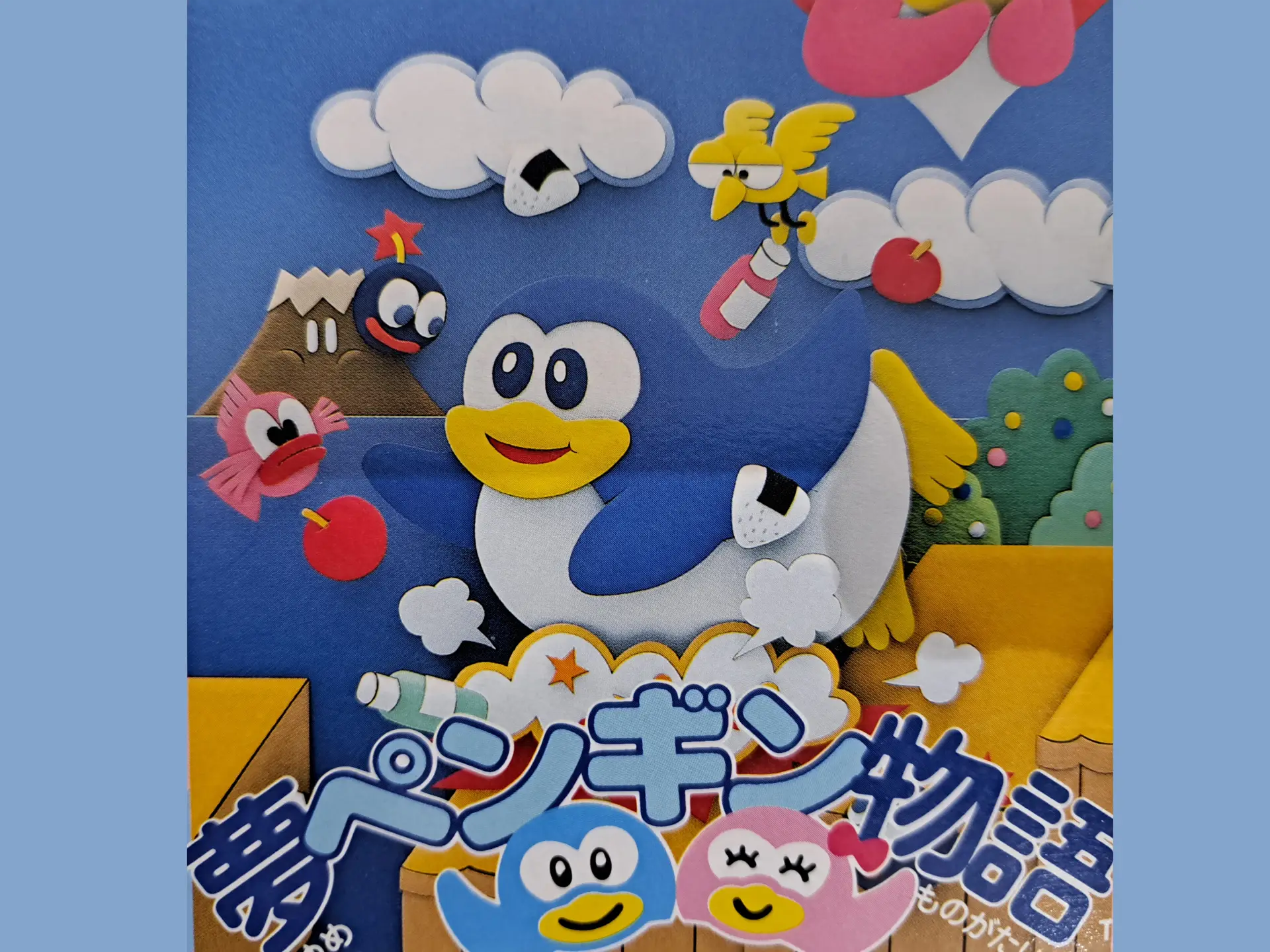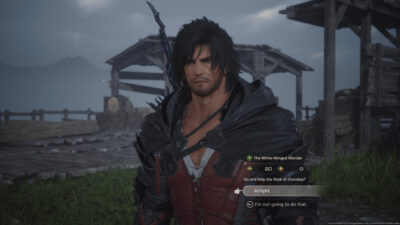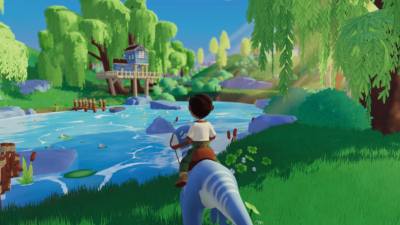
Ozzy Osbourne, Soviet leaders, and babies with magical rattles all feature in our list of the five weirdest Japan-only Famicom games ever made…
Continuing our commemoration of the 20th anniversary of the death of the Famicom, we examine five of the very strangest Famicom titles never to leave Japanese shores – are these the games that finally killed the console off forever?
I mean, no, probably not – but they’re all still fascinatingly odd…
Gorby no Pipeline Daisakusen (Gorby’s Great Pipeline Strategy) Compile, 1991
In 1989, Nintendo enjoyed a massive hit with its best-selling Game Boy version of Tetris; but what was the secret to the game’s success? Its impeccable design, addictive mechanics and perfect fit with its host platform? Not according to developers Compile, who thought the real reason for Tetris’ sales was that, reflecting its place of origin, the game was branded as if manufactured in the USSR, with Russian folk-music and the famous onion domes of Moscow’s St Basil’s Cathedral on the title screen.
Evidently, when Compile produced a serviceable enough Pipe Mania clone in 1991, in which the player had to match up not falling blocks, as in Tetris, but falling sections of pipes, the only thing missing was excess Russian-ness. Why not seek a licensing tie-in with a major Russian celebrity, therefore? But which one? Dostoyevsky, Gogol, Pushkin and Mendeleev all being dead, the only well-known Russian left was Mikhail Gorbachev, the then-President of the once-mighty Union of Soviet Socialist Republics. Who wouldn’t want to buy a game officially endorsed by the final leader of a political party responsible for the deaths, imprisonment and torture of millions of people across the course of nearly 75 years?
Official permission to feature the much-loved reformist dictator’s cute, anime-style likeness on the game’s title-screen and box was sought and received from the Soviet Embassy in Tokyo, and a basic plot hastily added in to justify the player’s pipe-based antics. In order to strengthen Soviet-Japanese relations (not great, ever since the Russo-Japanese war of 1904/05), you, as a small child, were tasked with creating a gigantic water pipeline from Moscow to Tokyo, in spite of the fact Japan had no pre-existing drinking-water shortage to mention. Japan does possess a notable deficit of fossil fuels like gas and oil, which Russia enjoys aplenty, but nobody appears to have thought of using the pipeline for such a rational purpose.
Rather than Tetris’ charming chip-tune version of Russian folk-song Korobeiniki, Compile preferred to Famicom-ify fragments of celebrated Russian classical pieces like Tchaikovsky’s Swan Lake and Rimsky-Korsikoff’s Flight of the Bumblebee instead. Meanwhile, to the left of the play-field, a girl waves semaphore flags as if directing obedient gulag-inmates where to lay the pipeline next.
Link the flowing water from the right of the playfield (Moscow) to the left (Tokyo) and you scored points; link it to a dead end and the screen begins to clog up with pipe-based playing-tiles. Do this too much, the playing-field fills up and it’s Game Over – you know, like in Tetris.
Weirdly, this was not the only Gorbachev-based video game available around this time; a mere two months following Gorby no Pipeline’s release in April 1991, Sega released a conveyor-belt-based puzzler named Ganbare Gorby! for its Game Gear handheld. A mere six months after that, in December 1991, the Soviet Union itself suddenly broke up.
Was Compile’s game so bad that it made an entire empire crumble and collapse in shame? If so, it wouldn’t be the first time a falling-tile puzzle game has been dubiously credited with bringing down the Berlin Wall. As for Compile, although now sadly bankrupt, it later recovered from the embarrassment of accidentally bringing down Communism by going on to develop some incredible shooters, including the Aleste series, and the Puyo Pop games.
Just think: had the Famicom existed back in the 1950s, we might well have ended up with a Puyo Puyo Stalin.
Bio Miracle Bokutte Upa (Bio Miracle – I Am Upa) Konami, 1988
Of all the possible protagonists to be chosen as the main character in a platform game, a baby would perhaps be one of the least logical choices of all. As proven by their almost total lack of success in the spheres of athletics and professional basketball, babies just can’t jump.
Konami’s 8-bit super-baby Upa (also co-star of some later Parodius parody-shooter games) can, however, thanks to his fortunate possession of a magical rattle which, as the game’s title implies, has the effect of turning him into a ‘Bio Miracle’ – a baby who can leap!
How did this outlandish situation come about? According to the Japanese instruction booklet: “Upa is the prince of a magical kingdom and the most recent in a line of brave fighters. One day, though, he broke an urn containing the spirit of Zai, an incredibly evil goatish demon who takes the life-force of the kingdom’s adults and kidnaps all the babies – except for Upa, who is given a magical rattle by a fairy who was trapped in the urn along with Zai. And so, in order to save his kingdom, Upa crawls into action…”
Lending a baby the ability to jump isn’t the magic rattle’s only trick, however. If Upa strikes an enemy (generally a cute pink pig) with one, it transforms temporarily into a kind of living helium balloon, soaring away diagonally upwards in the form of a floating platform which Upa can jump on and thus reach higher areas in search of baby-friendly goodies like bottles of milk.
Alternatively, another bash of the bottle transforms enemies into projectiles, sending them zooming horizontally, killing other foes on contact: a mechanic put to good use when battling the distinctly Birdo-like bosses, who spit mini-beasts out at you only thereby to self-defeatingly present you with the very ammo to kill them with. Just like Nintendo’s egg-emitting, big-mouthed pink dino-thing in Super Mario Bros 2.
This is an excellent mechanic, and, with most Konami titles of this era, the game’s still worth playing today. However, perhaps its commendable originality was actually its downfall. There cannot be many games in existence in which magic babies inflate pigs with rattles in order to defeat an evil goat-demon, and clearly Konami felt the game simply too weird to do well outside Japan, although an illegal reskinning of it was later released in China with a popular cartoon character from an anime series filling the role of baby. Perhaps Westerners are lucky Konami didn’t follow suit themselves and release a European and US version starring a half-naked Mikhail Gorbachev in a big nappy instead of brave little Upa.
Yume Penguin Monogatari (Dream Penguin Adventure) Konami, 1991
Another 1980s Konami character with a connection to its own Parodius games is Penta, the company’s cute blue penguin mascot whose son, Pentarou, functioned as a living, flying spaceship in the aforementioned Parodius series. Penta had previously appeared in 1980s racing-platformer titles Arctic Adventure and Penguin Adventure, where he was perfectly capable of leaping about to his heart’s content.
By 1991, however, Penta had let himself go, becoming so weighty that his long-term pink penguin girlfriend, Penko, threatened to dump him for a more slim-line purple bird wearing a top-hat, named Ginji. Cue the creation of a peculiar, but fun and original, platformer (with side-scrolling shooting stages stolen from Parodius) based on a unique weight-loss mechanic.
Rather than the usual hearts or hit-point system, Penta waddles through levels with his health measured by a weight-meter, not a life-meter. Starting out as the penguin equivalent of Pavarotti, Penta’s task is to make his way across environments on the lookout for diet drinks, whose consumption literally bring him down to size.
The more you swallow, the thinner you get, enabling faster walking speed, greater jumping prowess and superior attacks; you begin with a big fat belly-flop, but when you’ve lost enough weight are able to blast out long deadly lines of the letter ‘P’ (for ‘Penguin’?) across the screen as a projectile.
However, the dastardly Ginji has sent his army of gustatory temptation out to try and force-feed you cake, sweets and chocolate: every time you get hit by an enemy, they shove a biscuit down your beak and your weight begins to creep back up the scales again. It isn’t possible to die from this – there’s no bursting open from a final wafer-thin mint too, lest the mess of blood and penguin guts scare kids off from buying a copy.
If you’re still carrying too many pounds at the end of the game, however, Penko will cruelly reject you, sending you right back to the start to shed the stones again. If you do get thin enough to woo her, however, you go out on a date where Penko eats so much that she too puts on weight. It’s a harsh game, despite the cute imagery.
Holy Diver (no translation necessary …) Irem, 1989
At first sight, this doesn’t seem terribly strange; it’s an ultra-hard Castlevania clone where the main character shoots magical fireballs from his hands rather than wielding a whip. There’s also a touch of Mega Man in the way defeating the game’s end-of-level bosses gives you access to a new alternative spell-attack, with limited ammo/magic to power it.
Then, however – if you’re clued-up enough on your heavy metal to realise the fact – it slowly dawns on you that the game’s a completely unauthorised 8-bit retelling of a celebrated piece of 1980s hard rock, whose in-game characters include Ozzy Osbourne as a wizard.
Holy Diver is also the title of a best-selling 1983 concept album by US band Dio, led by vocalist Ronnie James Dio, of Ozzy’s old British outfit, Black Sabbath (Dio replaced Ozzy as Black Sabbath’s lead singer in 1979, due to the latter’s alleged drug addiction). Dio was a life-long fan of JRR Tolkien, Dungeons & Dragons and suchlike, and was responsible for first introducing such magical, orc and goblin-tinged themes into the world of metal, hence making his 1983 album ripe to be turned into a Castlevania or Wizards & Warriors-style rip-off.
Although Dio and Ozzy’s bandmates probably never knew it, the plot of Irem’s game featured them all. In the Year 666, the Crimson Kingdom of King Crimson (another popular rock band) faced destruction at the hands of the Black Slayer (Slayer being another genre band). Realising his doom was near, the current King Crimson, Emperor Ronnie IV (i.e., Ronnie Dio) entrusted his two sons, Randy and Zakk (Ozzy’s one-time solo career bandmates Zakk Wylde and Randy Rhoads) to his faithful wizard-servant, Ozzy (i.e., Ozzy Osbourne).
No doubt using some high-grade illegal substances or other, Ozzy teleports Randy and Zakk off to another dimension safely away from the Black Slayer, but ultimately dies there. Zakk then goes missing, meaning only Randy Rhodes is able to rescue the Crimson Kingdom by pretending to be Simon Belmont, across a numerically six levels. Even the game’s gothic box art looked just like a 1980s Iron Maiden album-cover.
Perhaps the fact Irem had no legal permission from Dio, Ozzy, et al, to make a video game about them explains why the title was never released in the west. Then again, maybe Irem thought any game in which an ex-Ozzy Osbourne guitarist possessed the ability to transform into a dragon and burn monsters to death with his breath was just too odd to find any kind of mass audience; the whole conceit is every bit as strange as suddenly finding The Beatles in Ninja Gaiden, or ABBA in Probotector.
Actually, what Irem’s metal-heads should have done is paid Konami to drop Ozzy Osbourne into a full-blown Castlevania game: Ozzy could defeat Dracula very easily, simply by biting the heads off all his bats.
Takeshi no Chōsenjō (Takeshi’s Challenge) Taito, 1986
Too obvious a choice? Maybe, but no list of weird Famicom games is complete without this, the proud first-ever recipient of Famitsu magazine’s cherished Kusoge, or ‘Shit Game Award’.
The strange thing being, Takeshi’s Letter of Challenge was a shit game by design, as its titular creator – actor, comedian and star Takeshi ‘Beat’ Kitano – hated electronic entertainment of all kinds. Supposedly, he said in 2010, he does own a mobile phone, but “I’ve never answered it.”
Kitano had previously starred (perhaps against his will) in the curious Nintendo spin-off title All Night Nippon Super Mario Bros, where, in his role as a popular radio-DJ, Takeshi had to be rescued from Bowser’s castle. Now, however, Takeshi was to be the hero of his own game, though ‘anti-hero’ might be a better term to use, as his sprite spends most of the time getting drunk and punching random pedestrians before stealing their money – even old women and children.
Although also a game-show host and author, Takeshi Kitano is best-known today as the actor-director of such acclaimed films as Hana-Bi, Sonatine and Violent Cop. Obsessed with Japanese gangsters, known as yakuza, and even suspecting his own father may have been one, Kitano set his 1986 side-scroller in the sordid realm of contemporary Japanese crime-lords. As a mere salaryman, disillusioned with his humdrum, non-gangsterish existence, Takeshi must seek treasure buried on a remote island, but actually getting there in the first place is difficult indeed.
The point appears to be to free the salaryman of his inherited inhibitions by breaking various social taboos – such as repeatedly punching people in the face and mugging them. Furthermore, he must get drunk and engage in humiliating rites of public karaoke before quitting his boring job and divorcing his wife (successfully doing so wipes out 75% of the player’s cash reserves in alimony fees; failure to do so sees your wife and child beating you up). If you try to get to Treasure Island – via a barely controllable hang-gliding mini-game involving the shooting down of UFOs – before successfully killing your old self off, your wife or boss will be waiting for you as you land, to forcibly repatriate you back to mainland Japan.
Because Kitano hated video games so much (there’s a big notice on the front of the box warning people not to buy it), he appears to have instructed Taito’s programmers to render the game itself near-unplayable. Infamously, you have to endure the karaoke mini-game by wailing into the Famicom’s unreliable in-controller microphone throughout as many as 30 songs, non-stop, then reveal the invisible ink on your treasure-map by placing it on the floor and leaving it untouched for a full hour – otherwise, you must start all over again. Fortunately, it’s possible to skip directly from the title-screen to the final level: but only by pressing the ‘punch’ button precisely 30,720 times, no more, no less.
The game’s conceit was supposedly concocted when Kitano was drunk in a bar during a development meeting, although it later transpired this was just an advertising lie. Nonetheless, the whole thing still comes across as a gigantic practical joke: video games are pointless tasks, Kitano seems to say, so why not make this fact explicit by filling an entire cartridge with nonsensically pointless tasks and then openly mock you for having wasted your money on it?
Complete the game, and all you get is a screen with Kitano calling you a moron by asking “Why are you taking this game so seriously?”
Disturbingly, Kitano’s low opinion of the average Japanese Famicom owner’s critical faculties proved accurate: just because it came with a celebrity’s face on the box, the intentionally unplayable game was a success, selling 800,000 copies. Imagine how many it could have sold if it was actually any good…





